ARII (LS) / 12 Squared 1/144 A-12
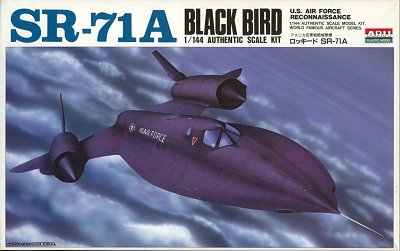
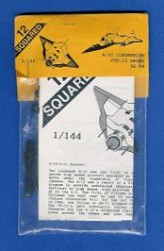
| Ever since I finished my YF-23 desk model, I have lots of plans to build more desk models, because I really enjoy having a model on my desk. One that I actually started is this ARII (ex LS) SR-71A that I am building as an A-12, the CIA-operated predecessor. The model is largely inspired by Tom Mahood's epic Hunt for 928, and I decided to do the same aircraft, 06928. Only one photo of this specific aircraft seems to exist, but since the markings are extremely basic, that's not a big problem.
|
Conversion set
| First a photo of the 12 Squared A-12 / M-12 + D-21 conversion set, catalog number '1-2'. The set is injection molded, which is quite special for an aftermarket set. Limited run injection molding is not easy to do however, and the resulting parts are quite rough. The set consist of four parts for the A-12 conversion (two nose parts and two tail parts) and eleven parts for the D-21 drone. No decals are included. The instruction sheet is fairly extensive. Reportedly the set is pretty rare, and a set was sold for 50$ on Ebay early 2004, and one for 20$ in 2006.
| 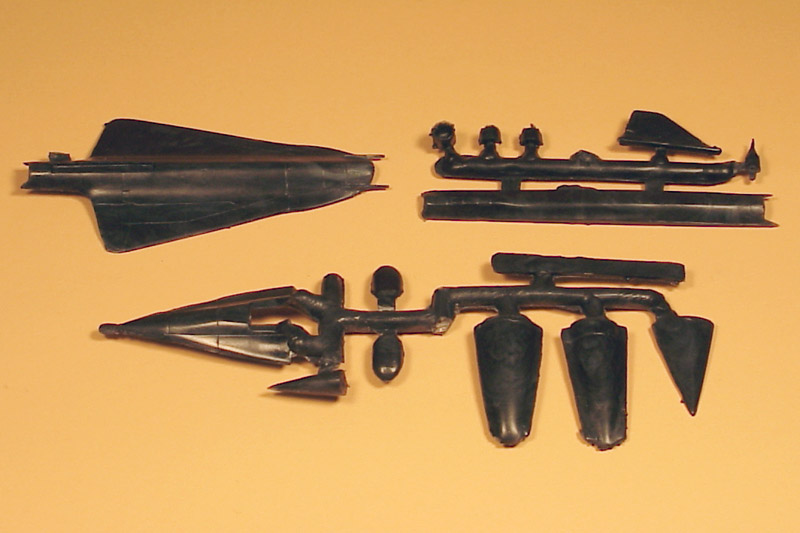
|
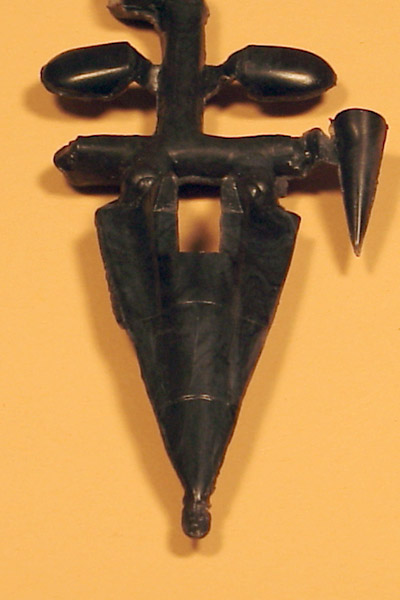
| A close-up of the nose part shows its rough outline: the definition of the chines leaves something to be desired. I decided to forget about the pitot tube (embedded in flash), and cut it off. 12 Squared apparently forgot an important aspect of the A-12 nose: the canopy is flush with the fuselage spine, whereas the SR cockpits project above the spine in a bulge. I measured that the SR's bump was 0.4 mm high, and removed 0.4 mm from the forward spine of the kit. To make the canopy sit flush with the lowered spine, I also cut away 0.4 mm from the cockpit opening.
|
Construction
| This photo shows the conversion well underway, with the cut-off SR-71 nose, and the 12 Squared nose fitted and base-coated. You can see the differences in the outline of the nose sections. After gluing the nose to the fuselage, a lot of work had to be done. Main job is the cleaning up of the chines. Lots of problems here. It turned out that some 'flash' I had removed before was part of the chine, and it had to be restored with plastic strip. The chine edges were fairly thick and required thinning. But it makes a big difference which side you sand, the top or lower side: it is very easy to create wavy chine edges. To judge the progress, I sprayed the whole nose medium grey. In my experience grey is the best color to judge shapes and build quality. This revealed that more work was needed on the chines. The concavity (is that English?) of the right and left chines was not identical, and the planform required a little more work.
| 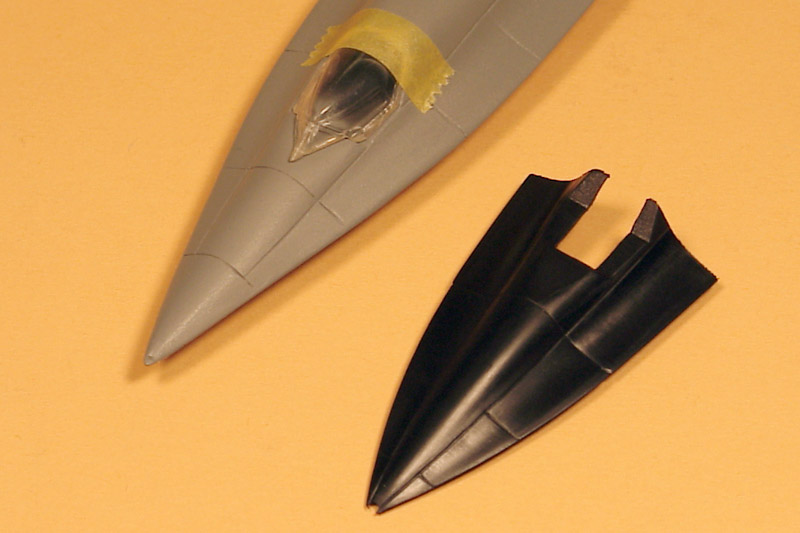
|
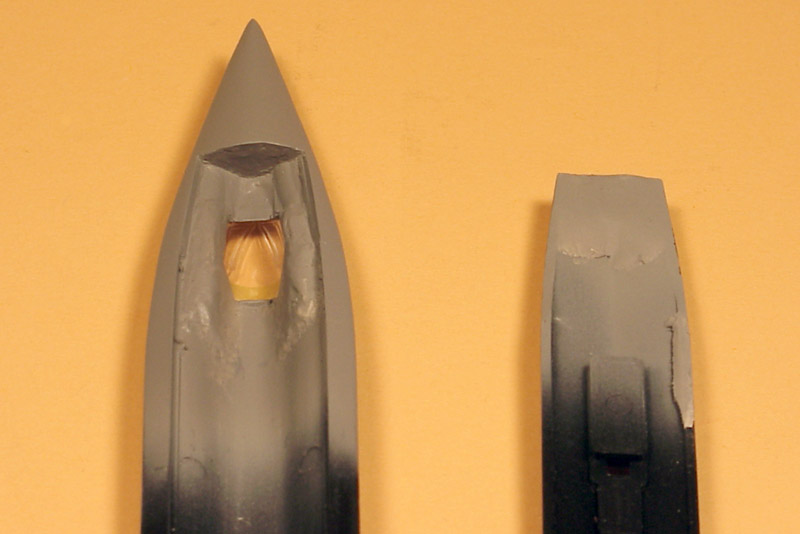
| On the lower side of the nose, I did not use the 12 Squared part, but built up the shape with Milliput. The forward part of the kit's lower fuselage was also filled with Milliput, to allow vigorous sanding. This is necessary because the A-12's nose starts to slope up much further back than that of the SR-71. I also used Milliput to strengthen the connection between the fuselage and the new nose.
|
As I wrote above, the nose shape of the A-12 is rather different than that of the SR, and quite difficult to capture properly. Here's a photo of my attempt so far, that also shows the straight spine described above. I think it starts to capture that sleek, pointy A-12 nose. I have some doubts about the panel lines of the 12 Squared parts though. The pattern looks a bit simplistic. A check of the angles at a later point showed the nose wasn't correct yet. The lower side sloped some 2 degrees too steep, the uppper side was almost correct. My drawings also showed that the nose kinks down some 2 degrees at the front cockpit bulkhead. I guess I saw it off later.
The side view photo shows another problem of the ARII / LS kit: the canopy. The windshield frame is canted forward *way* too much. This creates very small windscreen windows. And the canopy windows are sized accordingly, and are way too low too (observations courtesy of Eric Verschuur). I haven't figured out what to do here. Another detail, courtesy of Alan Johnson: early A-12's didn't have the heat soak splitter in front of the windshield center frame. However 928 appears to have it.
| 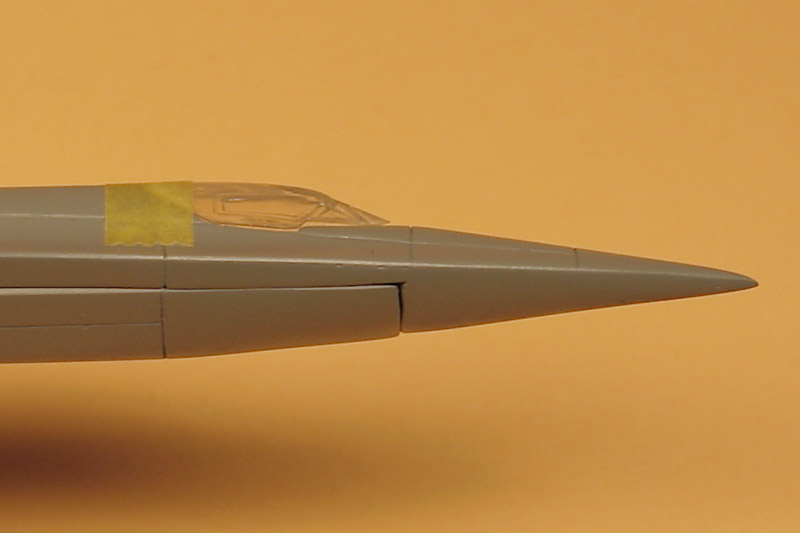
|
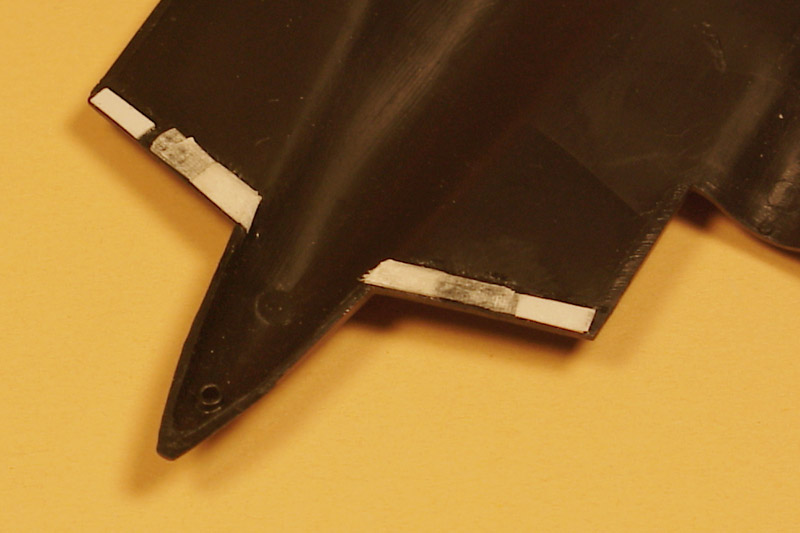
| I did some test fitting of the fuselage parts, but experienced minor difficulties. When gluing the lower fuselage into the upper fuselage, the fit is pretty good. ARII or LS fine-tuned the fit with small blocks at the edges, but forgot that this leaves very little area to glue. I built up the edges with thin plastic card to solve this.
|
| The A-12 has a much shorter fuselage, ending in a fuel dump. The 12 Squared parts are a bit rough, but quite usable. Here you see the modified upper fuselage part. I used both Milliput and Tamiya putty to fair in the new part.
| 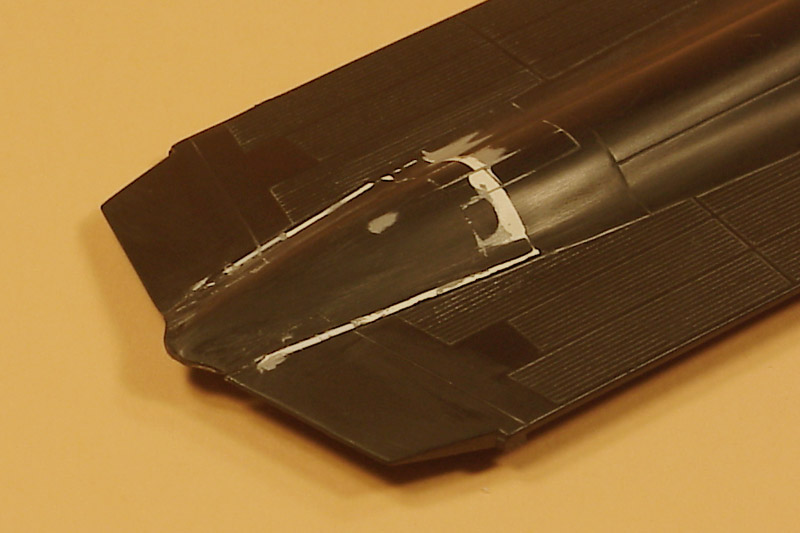
|
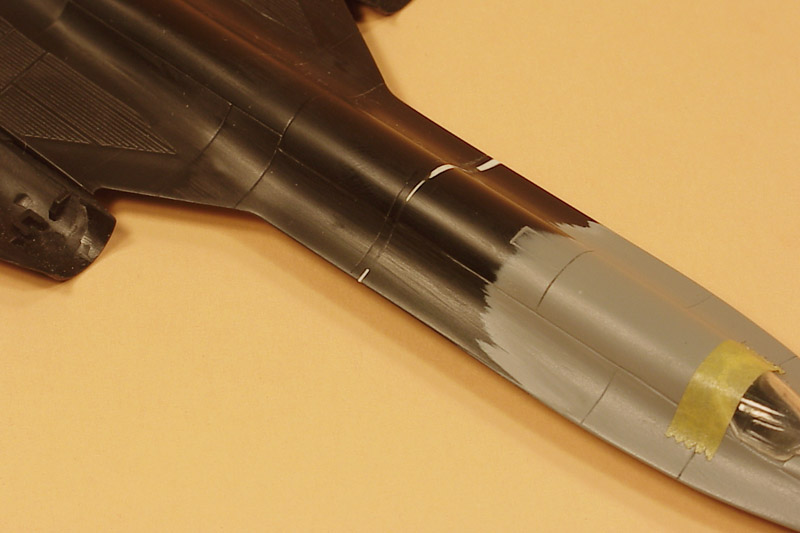
| After more measurements I concluded that the front fuselage is too long, by some 6-7 millimeters. I cut the fuselage parts in two, removed a segment, and glued them back together. I messed up the upper fuselage considerably, so a plastic card and Milliput repair was necessary. The front fuselage is also about one millimeter too narrow, but I decided against adding 0.5 mm on each side.
|
The nose and tail modifications are the main jobs to convert an SR-71 into an A-12. After that, the main job is adding the nacelles / outboard wings. Its construction looks tricky. The fit is very wobbly, and you don't have many visual alignment clues to get it right. And this is not helped by the outboard elevons being deflected, whereas the inboard ones are not! I'm not sure this is a realistic setting. I will probably change this.
I haven't decided yet whether I want to build my A-12 in a flying attitude, or on its gear. Something to decide later, when the main airframe components are put together, and I can hold in several positions to judge its appearance.
Colors and markings
Early A-12's had a nice black/titanium scheme, that was later changed to an overall black scheme. Since I wanted to do 928, of which just one photo exists in the black scheme, black it was going to be. I won't use straight black though, but a very, very dark grey with a little blue mixed in.
The decals in the ARII kit are not too bad, but unsuitable for a CIA A-12. '928' had only three sets of markings: '06928' serial numbers on the tail, white and red outline stars and bars on the fuselage, and yellow rescue markings around the cockpit. These were made in Corel Draw for Alps printing. It took me a very long time to get the stars and bars right. Only after drawing several versions that didn't look right, I found out that the 'bars' have a small vertical offset to the top! Now that I know I see it in commercial decals too. I had doubts whether or not there were red bars in the stars and bars, but Alan Johnson of the 'Black Magic' site confirmed that there were red bars in the markings of 928. I based the (provisional and unscaled) rescue markings on various A-12 photos, but good quality and original (as opposed to museum) A-12 photos are pretty rare. The font used for the 'rescue' marking is quite a-typical for a military aircraft, but that's what the photos show.
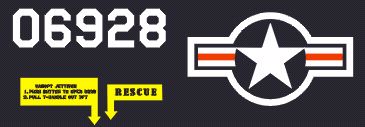
Other models
In 2012, Dragon issued a new 1/144 scale SR-71 model. My conversion had progressed to a point where I could not go back, so I did not buy the model to start over. The new model has 'stealth' triangles in the wing leading edges, but none in the chines of the fuselage. On the lower fuselage, the corrugations look rather simplistic. Unfortunately, the windshield is still not very good, with tiny windows. Here's a review by Matt Bittner on Internet Modeler.
Modeling links
Return to models page










